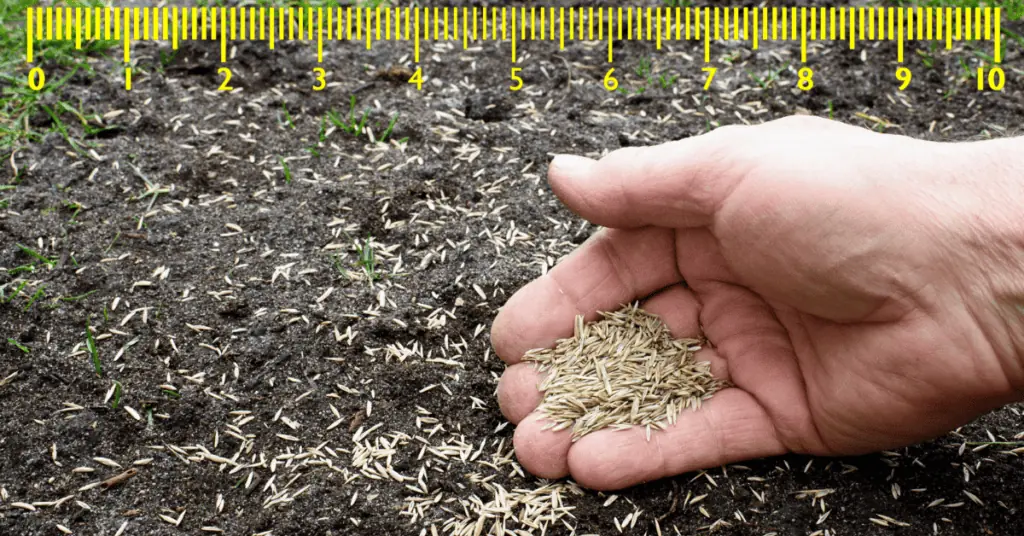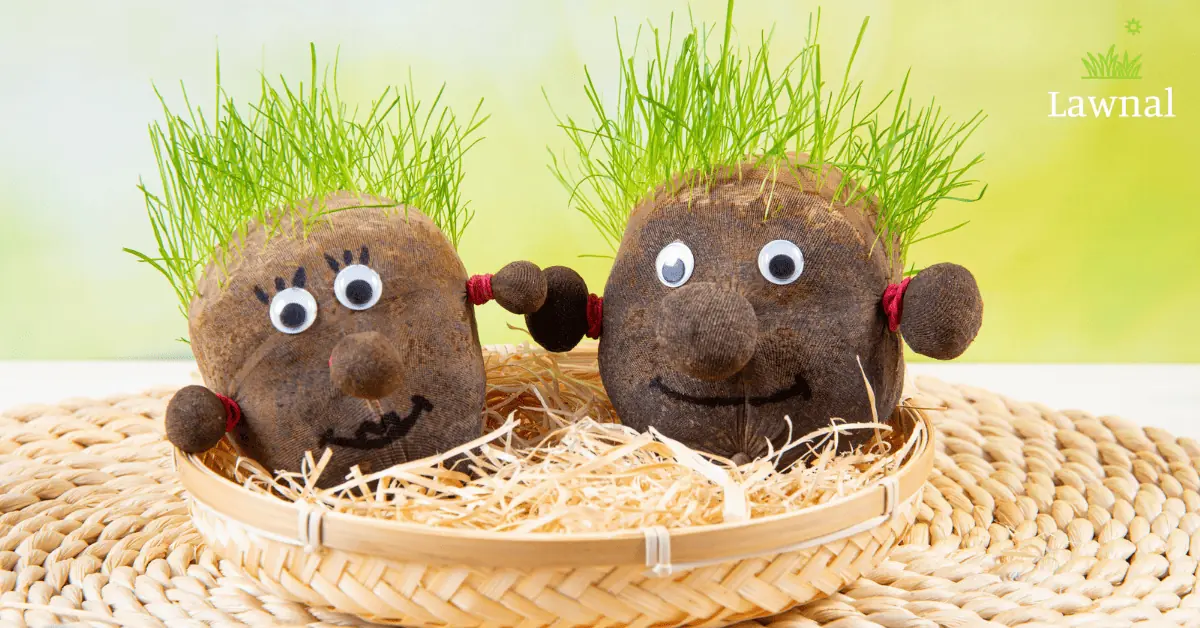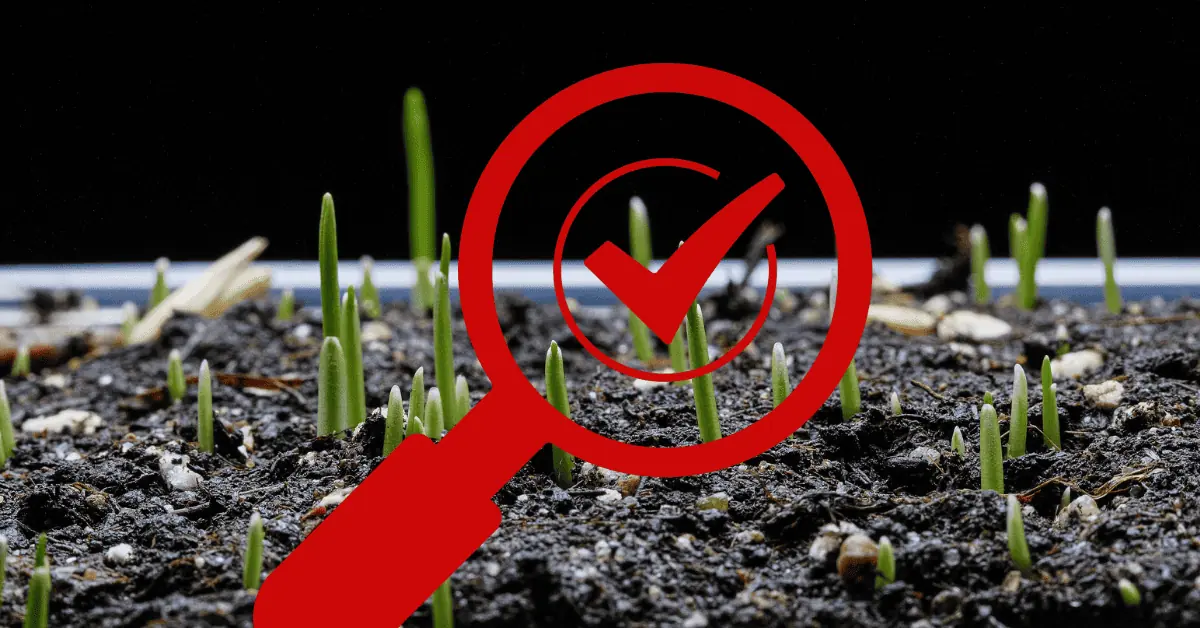The first step to getting a beautiful lawn is to ready the ground. After that, you can start thinking of the grass type you want to plant on it if you haven’t decided yet. When you know the grass type comes another question; How much grass seed do I need per square foot?
The answer isn’t as easy as you think because there are many varieties. You only need a glance at the grass seed aisle in your favorite store to know what you’re in for. These grass types have different seeding requirements, which you must follow religiously if you want a healthy lawn.
This article will educate you on almost everything you need about the amount of grass seed per square foot. You’ll get a tabled form of the most common yard grasses and the seed amount you need for planting new grass and overseeding.
Overseeding vs. Planting New Grass
Before buying a grass seed, it’s imperative to understand that there are different requirements for new grass and overseeding. Planting new grass is self-explanatory, while overseeding is sowing a new grass seed with existing grasses.
Overseeding is used to fill out dead spots, patches, improve grass density, or add variety to your lawn. You’ll need fewer seeds when overseeding.
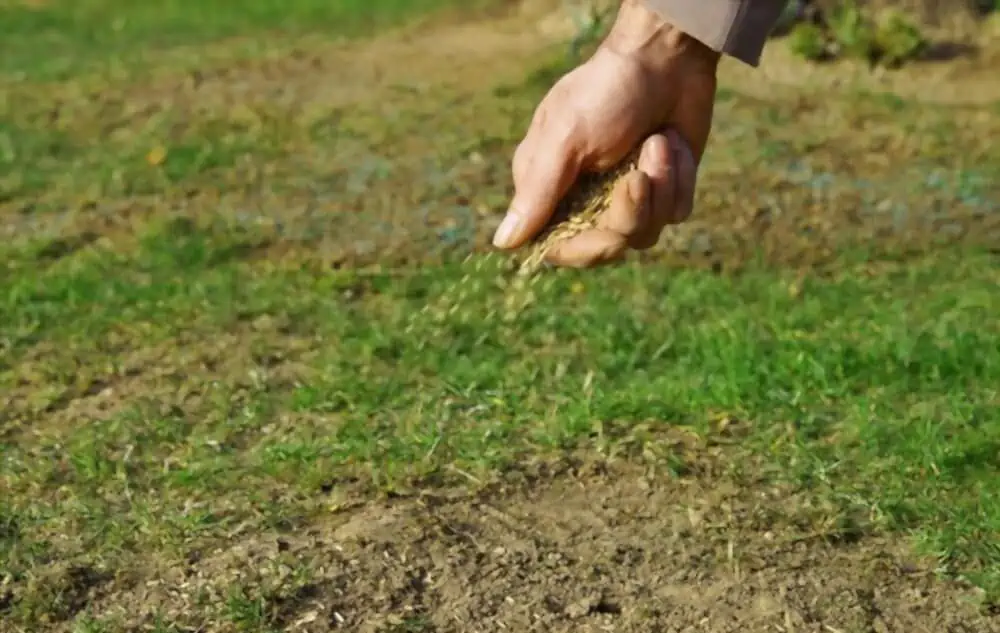
Warm Weather Vs. Cool Weather Grass
Warm weather and cool weather grasses are basically what they sound like. One thrives on warm temperatures between 75-90 degrees Fahrenheit, while the other enjoys colder temperatures.
Cold-weather grasses enjoy locations that have warm summers and cold winters. They thrive well in spring when the weather is around 65-80 degrees.
Some popular warm-weather grasses include St. Augustine, Bermuda, and Perrenial ryegrass. Popular cool-weather grasses include Kentucky bluegrass, fine fescue, tall fescue, rough bluegrass, and perennial ryegrass.
Seed Quality
There are different qualities of seeds in the market, and the type you buy can significantly affect your plant growth. Use the highest quality seed to grow your yard from scratch. You may get subpar results if you use low-quality seeds for your space.
Shade Vs. Sun
Grasses need the sun to thrive, but too much isn’t a good thing. If there’s too much sun, it can be hard to keep them moist, and grasses need a good balance of sun and moisture to thrive. Therefore, you may need more seeds to make the grass grow well.
If you’re working with a shaded area, the soil will have more moisture, which will help the grasses to grow. In this case, the seeds you’ll need should be less than the sunny area. You’ll learn the number of appropriate seeds for shady and sunny areas of your yard.
How Much Grass Seed Do I Need Per Square Foot?
| Grass Type | New Lawn (Pounds per 1,000 square feet) | Overseeding (Pounds per 1,000 square feet) |
| Bermuda Grass | 2.5-2.5 pounds | 1 pound |
| Bahia | 8-10 pounds | 4-5 pounds |
| Centipede | 0.5-1 pound | 0.3-0.5 pound |
| Fine Fescue | 5 pounds | 2.5 pounds |
| Buffalo | 3 pounds | 1-1.5 pounds |
| Carpetgrass | 2 pounds | 1 pound |
| Kentucky grass | 2-4 pounds | 1-2 pounds |
| Perennial Ryegrass | 9-10 pounds | 5-6 pounds |
| Tall Fescue | 8-10 pounds | 4-5 pounds |
| Bentgrass | 2 pounds | 1-2 pounds |
| Zoysia | 2 pounds | 1 pound |
There’s how much grass seed you’ll need for planting on a new lawn and overseeding. You’ll need five pounds of Fine fescue for 1,000 square feet of space and three pounds to plant Buffalo grass. Carpetgrass is one pound shorter at 2 pounds, and you might need to prepare a massive 10 pounds seedling for your Tall fescue.
Notice that seed types like tall fescue, perennial ryegrass, and Kentucky grass are in a range. If you want to plant these grass types, use the lower measures for a shady area and the higher ones for dry spaces.
Understand that there are some grass types that this table didn’t cover. You can check out the seed amount per square foot of these grasses online or check the seed’s packaging. Most manufacturers will almost always include a coverage rate in the packaging.
Another way is to ask the professionals at the store where you bought the grass. They usually know the grass seed you’d need for a specific space. With little calculation, you can use their advice to determine the amount you’ll need for your yard area.
How Much Grass Seed is Sufficient for My Yard Area?
You only need little mathematics to determine the correct grass seeds for your yard area. If you know the amount suitable for a 1,000 square feet space, you can multiply it by the total yard area. This simple calculation will show how many grass seeds you need to plant.
For example, if you want to plant Fine Fescue in a one-acre yard, you already know five pounds is for 1,000 square feet. An acre is 43,560 square feet. All you have to do is first divide 43,560 by 1,000, which is 43.56.
If you multiply this 43.56 by 5 pounds (the amount of seed you need per 1,000 square feet), you get approximately 217. This simple calculation implies you’ll need around 217 pounds of Fine fescue to cover a one-acre yard. You can use this formula to calculate the total coverage rate for any grass seed type.
What Happens If I Plant Too Much Grass Seeds?
You could hurt your pocket and grasses if you plant more grass seeds than you should. The grasses need nutrients, sunlight, and water to grow, which they will get in the correct quantity if you plant the seeds in the right proportion. The seeds will struggle for these components, which can harm their germination if you sow more than appropriate.
Just like planting too much isn’t healthy, so is growing too little. The grasses won’t spread over the whole lawn, and it will hinder their germination process.
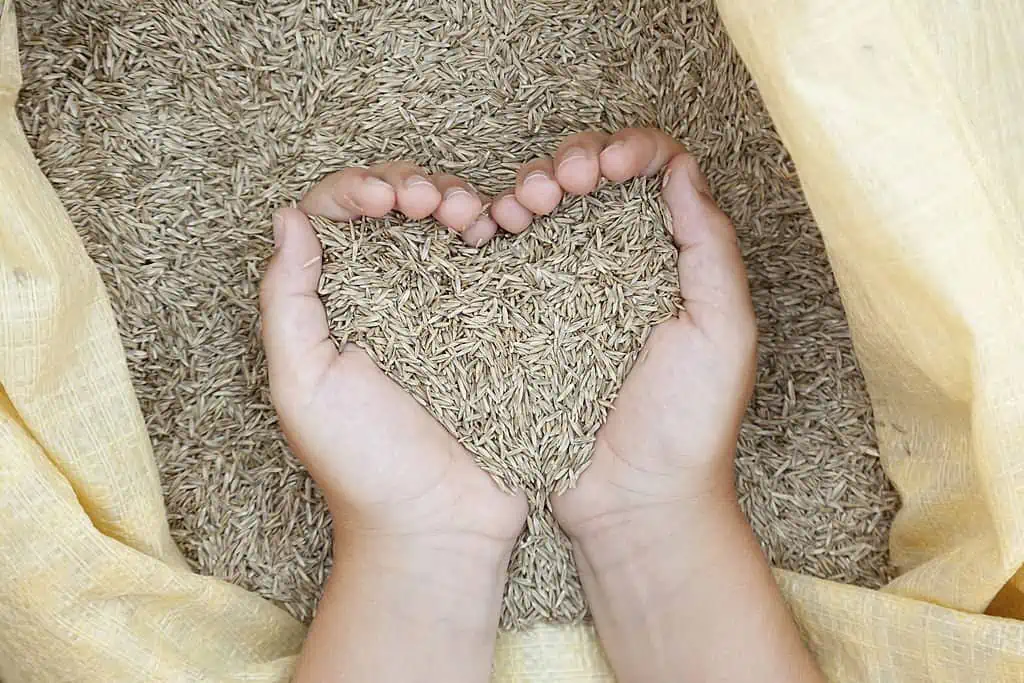
How to Care For Your Newly Seeded Grasses?
Before you plant your seeds, prepare the ground to accommodate them. Mow all the grass on the floor and ensure the clean loamy soil remains. Remove all rocks or debris so that you can get flat ground.
After preparing the ground, ensure that you plant the grasses at the right time of the year. Plant the warm seasoned grass during the warm season and the cool seasoned grass during the cold season.
If you want to plant the seed, dig it to around a three inches depth. Put the seeds inside the hole and add compost, topsoil, and fertilizer to help them germinate.
After that, water the seeds consistently. Don’t expose them to too much water because it could wash them off the lawn; just keep them moist. If they’re in the early stages of their life, don’t spray them more than one inch of water weekly.
You can start using fertilizer on the grasses when they get a height of around one to two inches. Only use a starter fertilizer because they contain a high phosphorus level which is what new grasses need to germinate. Avoid using any other type of fertilizer.
When Can I Mow My New Grass?
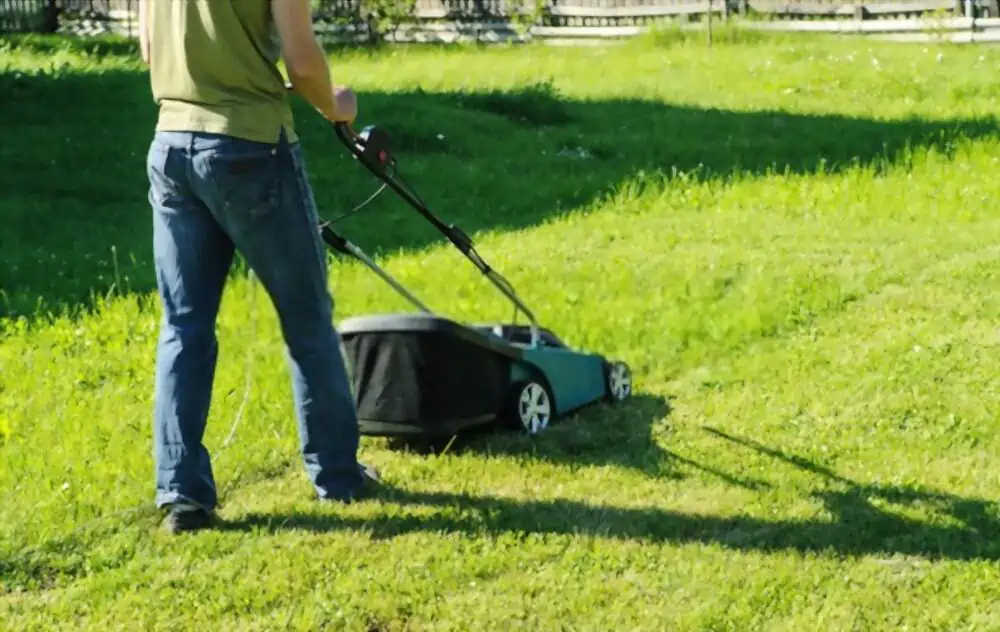
The best way to determine the right time to mow your grasses for the first time is through height. You can start cutting your grasses when it reaches a comfortable three inches height. Cut ⅓ of the grass at a time, and you have to be careful when doing so.
Ensure your blade is sharp, and avoid making sharp turns with the mower. Although moisture is good, it isn’t when you want to cut your new grasses. The rule of thumb is to let your grasses dry for at least 48 hours before you mow them for the first time.
Conclusion
That concludes all you need to know about the grass you need per square foot. There isn’t a one-size-fits-all approach, and it depends on factors like the type of grass, weather, and others. The key is to understand the requirement for the grass type you want to grow and go for it.
Ensure you buy quality seeds to give your grasses the best chance of growing into lovely plants. Carefully analyze your location and weather so you can decide on the perfect grass seed to plant.
Your job doesn’t start or end from where you put the seeds into the soil. The pre-plant and after-planting maintenance prowess is crucial to them germinating into lovely plants. Ensure that you prepare the ground properly before you start planting.
